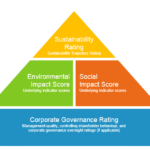By 2025, organisations in telecommunications, retail and financial services have moved beyond proofs of concept to deploy generative-AI conversational agents that handle routine inquiries, personalise interactions and scale dynamically. As we look ahead three years, these implementations will mature into proactive support ecosystems—anticipating customer needs, orchestrating complex workflows and enabling human teams to focus on high-value activities. This article presents a consultant-grade framework for that journey, detailing strategic priorities, operating-model shifts and the impact of key initiatives.
Overview
- 2025 Baseline: AI agents resolve up to 30 percent of standard tickets, boost first-contact resolution by 15–20 percent and integrate basic CRM data.
- 2028 Vision: Multimodal assistants that predict needs, execute end-to-end remediation and seamlessly collaborate with specialists.
- Immediate Focus: Build a unified data foundation, redesign roles around AI augmentation and establish robust ethical and governance controls.
1. The 2025 Starting Point: Achievements and Obstacles
Early Wins
- Efficiency Gains: Cloud-hosted AI platforms deflect high-volume requests (order status, billing) and maintain performance under peak loads.
- Personalisation: Real-time access to customer profiles enables tailored responses, driving a 10 percent uplift in CSAT.
- Cost Savings: Initial pilots deliver a 5–10 percent reduction in cost-to-serve.
Key Challenges
- Data Inconsistency: Fragmented records impede accurate intent recognition, leading to misrouted conversations.
- Legacy Integration: Monolithic back-end systems require extensive middleware, delaying full automation.
- Change Resistance: Support staff express concern over role shifts and the preservation of human empathy.
These insights underscore that technology alone is insufficient; success depends equally on organisational alignment, data quality and change management.
2. Projecting to 2028: A Three-Year Blueprint
A. Technical Evolution
- Multimodal Comprehension: Agents will analyse text, voice and images—enabling customers to upload photos of damaged goods or speak in regional dialects with equal accuracy.
- Predictive Engagement: By monitoring usage patterns and system health, AI will notify customers of disruptions or renewal opportunities before they emerge.
- Autonomous Workflow Execution: Conversational agents will interact directly with CRM, billing and field-service tools—initiating refunds, scheduling technicians and updating records without human intervention.
B. Organisational Transformation
- AI Support Centre of Excellence (CoE): Tasked with model governance, data stewardship and practice standardisation.
- Role Redefinition: Human agents will transition into “exception managers,” focusing on empathy, complex-case resolution and continuous model training.
- Governance Council: A cross-functional body (IT, legal, compliance, CX) will oversee ethics, privacy and strategic alignment.
C. Customer Experience Elevation
- Hyper-Personalisation: Sentiment analysis and lifetime-value scoring will tailor channel selection, tone and offers for each individual.
- Frictionless Escalation: Defined protocols will ensure smooth handoffs between AI and human agents, complete with contextual briefings.
- Transparent AI Use: Customers will be clearly informed when they engage with automated systems and understand how their data is applied.
3. Strategic Imperatives (2025–2028)
- Establish a Unified Data Foundation
- Master Customer Records: Consolidate orders, service logs and feedback into a single profile.
- Real-Time Data Streams: Implement event streaming to supply AI models with up-to-the-minute insights.
- Redesign the Support Operating Model
- Agile CoE: Enable rapid experimentation, A/B testing of dialogue flows and performance benchmarking.
- Talent Upskilling: Offer training in AI literacy, data governance and advanced customer-interaction techniques.
- Modernise Technology Architecture
- Modular, API-First Platforms: Decouple AI services from legacy monoliths to accelerate innovation.
- Strategic Partnerships: Leverage managed AI, MLOps tooling and annotation services to shorten time to value.
- Embed Responsible-AI Practices
- Ethical Framework: Define and enforce principles for fairness, explainability and accountability through audit trails and bias assessments.
- Privacy by Design: Apply data-minimisation and anonymisation techniques to comply with GDPR, CCPA and emerging global regulations.
- Implement Continuous Measurement
- Leading Indicators: Automated-resolution rate, intent-recognition accuracy and AI-to-human handoff success.
- Lagging Indicators: Net Promoter Score (NPS), cost-to-serve reduction and customer-lifetime-value growth.
4. Implementation Roadmap and Impact
| Phase | Key Activities | Expected Impact by 2028 |
|---|---|---|
| Phase 1 (2025–26) | • Data harmonisation • Initial CoE launch • Pilot conversational agents | • 10 % reduction in misrouted tickets • 20 % call-deflection rate • 10 % CSAT uplift • 8 % cost-to-serve savings |
| Phase 2 (2026–27) | • Multimodal input integration • Workforce reskilling • Governance council formation | • 90 % AI resolution accuracy • 25 % fewer escalations • 80 % agent adoption rate • 15 % productivity improvement |
| Phase 3 (2027–28) | • Autonomous workflow orchestration • Predictive-engagement rollout • Advanced analytics dashboards | • 35 % increase in proactive resolutions • 50 % reduction in average handle time • 20 % churn reduction • 10-point NPS gain • 25 % overall service-cost reduction |
This phased approach balances quick wins with foundational investments, ensuring sustainable momentum without overextending resources.
5. Case Study: Global Telecom Operator
A multinational telecom began its transformation in 2025:
- Pilot Phase: Introduced an AI assistant for billing queries, achieving a 25 percent deflection rate and a 10-point CSAT increase.
- CoE Establishment: Created an AI Support CoE to govern model training, data quality and best-practice dissemination.
- Capability Expansion: By 2027, added voice-and-image recognition—enabling customers to report equipment damage via photo uploads.
- Proactive Service Launch: In early 2028, deployed autonomous outage detection, automatically notifying affected subscribers with tailored compensation offers and reducing churn by 15 percent.
This progression underscores how structured investment, governance rigour and agile scaling can deliver compounding benefits in under three years.
Strategic Outlook
By 2028, generative AI will have reshaped customer support—elevating it from reactive ticketing to proactive, insight-driven engagement. Realising this vision demands more than advanced models: it requires unified data strategies, operating-model innovation, disciplined governance and a human-centred ethos.
At G&W, we guide organisations through each stage of this transformation—combining strategic counsel, technical expertise and change-management proficiency. By acting now and iterating continuously, you can convert customer support into a strategic differentiator that delivers personalised, anticipatory service at scale while upholding the highest standards of trust and integrity.



